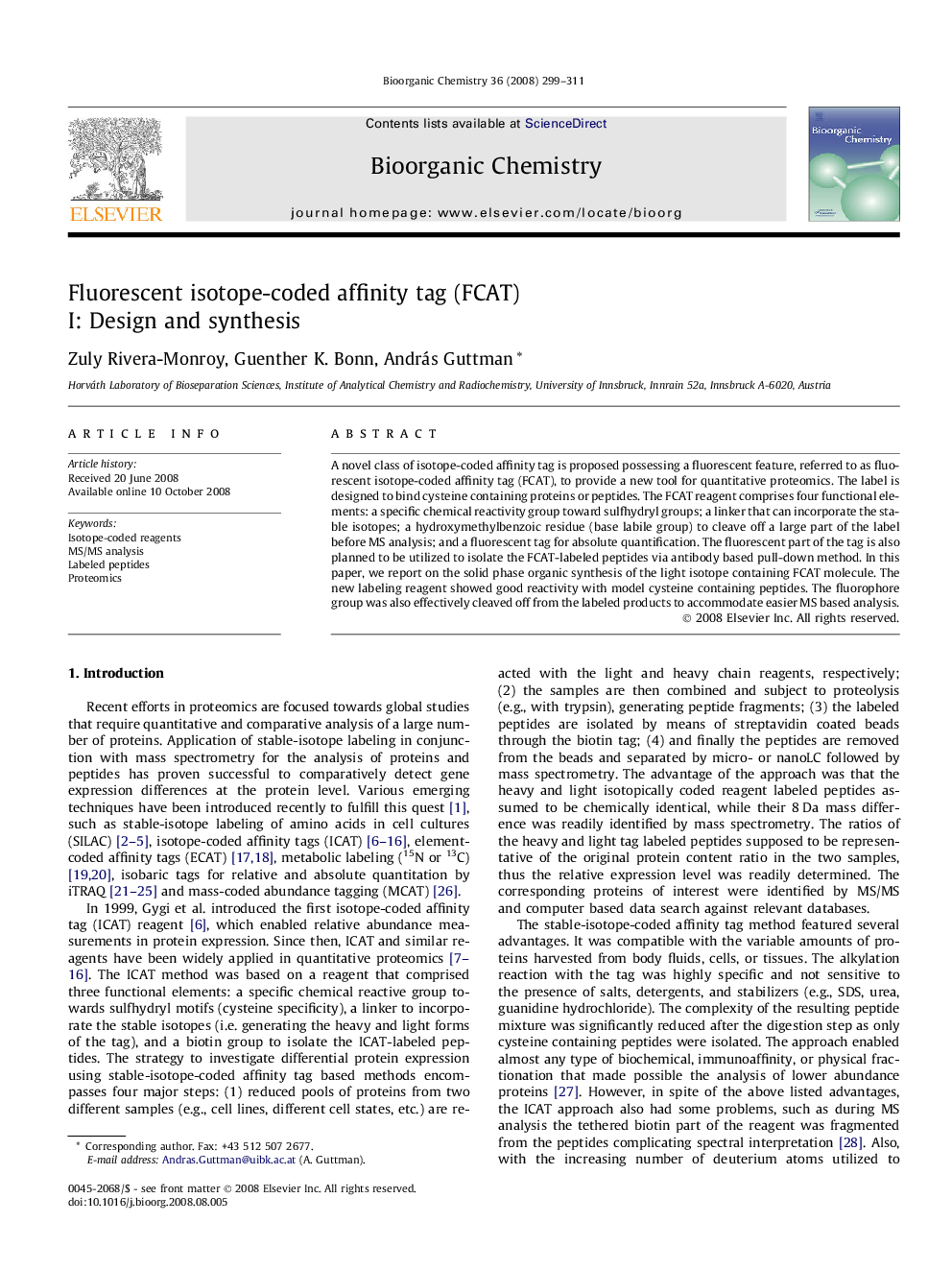| Article ID | Journal | Published Year | Pages | File Type |
|---|---|---|---|---|
| 1355944 | Bioorganic Chemistry | 2008 | 13 Pages |
A novel class of isotope-coded affinity tag is proposed possessing a fluorescent feature, referred to as fluorescent isotope-coded affinity tag (FCAT), to provide a new tool for quantitative proteomics. The label is designed to bind cysteine containing proteins or peptides. The FCAT reagent comprises four functional elements: a specific chemical reactivity group toward sulfhydryl groups; a linker that can incorporate the stable isotopes; a hydroxymethylbenzoic residue (base labile group) to cleave off a large part of the label before MS analysis; and a fluorescent tag for absolute quantification. The fluorescent part of the tag is also planned to be utilized to isolate the FCAT-labeled peptides via antibody based pull-down method. In this paper, we report on the solid phase organic synthesis of the light isotope containing FCAT molecule. The new labeling reagent showed good reactivity with model cysteine containing peptides. The fluorophore group was also effectively cleaved off from the labeled products to accommodate easier MS based analysis.
Graphical abstractFluorescent isotope-coded affinity tag (FCAT) is new class of reagent to label cysteine containing proteins and/or peptides, providing a tool for quantitative proteomics with the option of absolute quantification. In this paper, we describe the design, synthesis characterization and reactivity of FCAT reagent.Figure optionsDownload full-size imageDownload as PowerPoint slide
